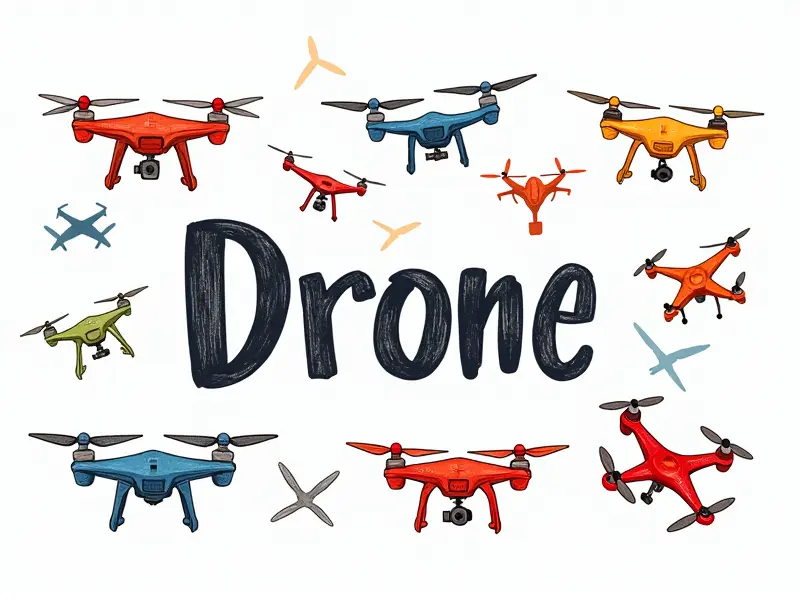Is quadcopter drone a bird?

Why People Mistake Drones for Birds
The phenomenon of mistaking quadcopters for birds is not uncommon, especially in urban areas where both are frequently observed. The similarity in size and flight patterns can lead to confusion among observers. Quadcopters often mimic the erratic movements and quick changes in direction that birds exhibit, making them appear more bird-like than mechanical. This article explores why such confusions occur and delves into the differences between quadcopters and actual avian creatures.
Quadcopters vs Birds: Can You Tell The Difference?
Distinguishing between a quadcopter drone and an actual bird can be challenging, but there are several key differences to look out for. Quadcopters typically have four visible propellers arranged symmetrically around the body of the drone, while birds have wings that flap in a rhythmic pattern. Additionally, drones often emit a distinct buzzing or whirring sound due to their electric motors and propellers, whereas birds produce chirping sounds and vocalizations.
Urban Wildlife: Drones Mimicking Birds
In urban environments, quadcopters are increasingly being used for surveillance, photography, and recreational purposes. Their ability to mimic the flight patterns of birds makes them particularly effective in these roles. For instance, drones can hover, fly at low altitudes, and maneuver through tight spaces with agility similar to that of small birds like sparrows or finches.
Camouflage Techniques
Some advanced models of quadcopters are designed to blend into the environment by mimicking bird feathers or patterns. This camouflage technique not only enhances their visual appeal but also aids in stealth operations and surveillance tasks.
Debunking Myths: Are Quadcopters Like Birds?
The notion that quadcopters are similar to birds is often based on surface-level observations rather than a deeper understanding of flight mechanics. While both can fly, the mechanisms behind their aerial capabilities differ significantly.
Flight Mechanics
- Birds: Birds achieve lift through flapping wings that generate thrust and lift simultaneously. Their skeletal structure is lightweight yet strong, allowing for efficient flight.
- Quadcopters: Quadcopters rely on four rotors to create lift and control movement. They use electronic stabilization systems to maintain balance and orientation during flight.
Evolutionary Adaptations
Birds have evolved over millions of years, developing specialized muscles, bones, and feathers that enable them to fly efficiently in various environments. In contrast, quadcopters are relatively recent inventions, designed by engineers with a focus on aerodynamics and control systems.
Is Your Drone Closer to a Bird Than a Plane?
The question of whether a drone is more akin to a bird or an aircraft depends largely on the context. While drones share some similarities with birds in terms of maneuverability, they are fundamentally different from both birds and traditional planes.
Maneuverability
- Birds: Birds can perform rapid turns, dives, and climbs due to their flexible skeletal structure and powerful muscles.
- Drones: Drones excel in hovering and maintaining stability at low altitudes, thanks to advanced stabilization technology.
Aerodynamics
Traditional aircraft are optimized for long-distance travel and high-speed flight. In contrast, drones are designed for short-range missions requiring precise control over their movements.
Flying Machines: Drones vs Real Birds
The comparison between quadcopters and real birds highlights the unique capabilities of each. While both can soar through the skies, they serve different purposes and operate under distinct principles.
Flight Purposes
- Birds: Birds use flight for hunting, migration, and communication.
- Drones: Drones are used for photography, surveillance, delivery services, and recreational activities.
Quadcopter Flight Dynamics Compared to Birds
The dynamics of quadcopter flight involve complex interactions between the rotors, frame design, and onboard electronics. In contrast, birds rely on natural aerodynamics governed by their anatomy and physiology.
Propulsion Systems
- Birds: Birds use a flapping wing mechanism to generate lift and thrust.
- Drones: Drones utilize electric motors driving propellers for propulsion.
Quadcopters: Man-Made Marvels Imitating Bird Flight
The design of quadcopters often draws inspiration from the flight patterns and aerodynamics observed in birds. However, these drones are engineered to perform specific tasks that go beyond simple mimicry.
Inspiration from Nature
- Engineers study bird anatomy to optimize drone designs for efficiency and maneuverability.
- Drones incorporate advanced sensors and algorithms to replicate the agility of birds in flight.
Quadcopters in the Sky: Bird or Machine?
The debate over whether quadcopters are more like birds than machines is a testament to their sophisticated design. While they mimic some aspects of avian flight, they remain distinctly man-made creations with unique capabilities.
Bird-Like Capabilities
- Hovering and maneuverability at low altitudes.
- Able to navigate through tight spaces and avoid obstacles.
Mechanical Advantages
- Precision control over flight path and altitude.
- Ability to carry payloads and perform tasks beyond the scope of birds.
Are Quadcopters More Like Birds Than You Think?
The similarities between quadcopters and birds are more than superficial. Engineers continue to innovate, drawing inspiration from nature to create drones that can mimic bird flight with increasing accuracy.
Future Developments
- Incorporating biomimicry principles into drone design.
- Developing advanced AI systems for autonomous navigation and decision-making.
From Birds to Drones: Evolution in the Sky
The evolution from simple mechanical flight to sophisticated drones reflects humanity's ongoing quest to understand and replicate natural phenomena. As technology advances, we can expect even closer integration of drone design with biological principles.
Conclusion
While quadcopters may appear bird-like in certain aspects, they remain fundamentally different from their feathered counterparts. The similarities are a result of human ingenuity and the desire to replicate nature's marvels. As technology continues to evolve, drones will likely become even more adept at mimicking avian flight patterns, pushing the boundaries of what is possible with man-made flying machines.

